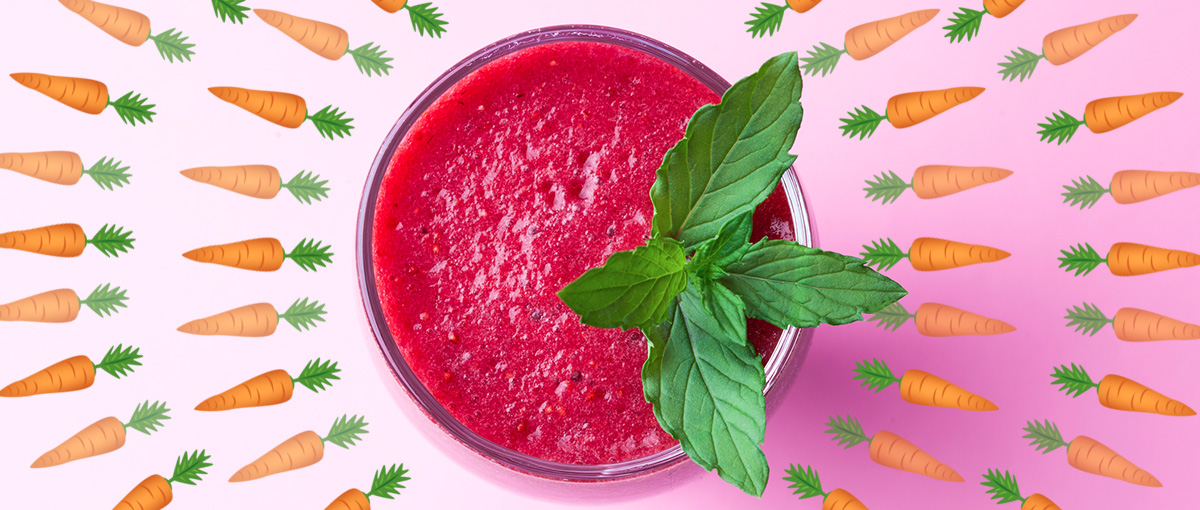By now, you know that plastic straws are on the way out. Not only do they provide a lot of extra litter, but there’s just so many of them in use every day. Environmentally, they’re not the greatest for our environment.
But still, they serve a purpose. And that’s probably why everyone’s looking for a good replacement.
A lot of places are starting to offer up paper straws. Others, like Starbucks, are changing up their lids for an easy way to sip on a cold drink. Most coffee shops, especially chains, have no problem with customers using reusable cups to get their caffeine on the go. But for other drinks, like smoothies, it may be a little more challenging. Smoothies are not only thicker than coffee and soda, but their receptacles often take slightly longer to clean.
That doesn’t mean that smoothie stands need to ditch their product if they want to be more environmentally friendly. It just means they might need to be a little creative.
That’s at least the direction that Bananas Smoothies & Frozen Yogurt took. The chain is a smaller one, with just around 30 locations so far. But since their primary item is frozen drinks, failing to participate in the movement would really be detrimental to the environment.
So, they thought of the next best thing. Edible straws.

And not only are they edible. But, they’re carrots. So it’s like you’re getting even more nutrition in.
Sure, smoothies may not be the greatest thing for you, depending on what you put in there. But usually, they’re a tasty way to ensure that at least some fruits and vegetables are entering your body.

Each carrot would be hollowed out so that the smoothie can travel right to you. But even though it’s a solid idea, it still seems a little extreme.

Maybe because it’s pretty obvious that not everyone will be eating that carrot. Especially depending on what kind of smoothie you get.
So, instead of plastic waste, you might accidentally create food waste. Which happens, but it’s something we should all try to prevent whenever possible.
Did you know that roughly 33% of the food produced in the world for human consumption every year gets lost or wasted? Fruits and vegetables have the highest wastage rates of any food. What steps do you take for reducing food waste both in your home and out in public? #zerowaste pic.twitter.com/ZylAabIIB6
— EcoEnclose (@ecoenclose) April 19, 2019
Also, it’s rare, but some people form allergic reactions to carrots. According to Healthline, that allergy can create a response that’s either mild or… pretty serious.
Never heard of a carrot allergy until tonight when my daughter got whelps and hives from eating carrots. 😑💁
— Karen Y Anglin (@karenanglin94) October 12, 2016
They report that carrot allergies have a few symptoms. Usually, an itchy mouth is the first indicator.
But swelling, hives, and difficulty breathing are also on the list. People allergic to carrots are even at risk of being allergic to other vegetables within the same family, like celery, fennel, and dill.
But, that might be not at the top of mind for the company, who thinks that using carrots is a great solution. “We’ve started testing a prototype for a carrot straw in the hopes that one day we may be able to serve all our nutritious juices, smoothies and more with a healthy, edible, and ultimately environmentally-friendly straw option nationwide,” COO of Villa Restaurant Group Andrew Steinberg said, according to Delish.
Surely those who are affected would try another method. May I suggest “biting into both ends of a Twizzler”? It’s been my “I need a straw” go-to and hasn’t failed me yet.
it's 2:15am and I just drank pineapple soda through a twizzler straw, so that's about where I am with my life right now.
— stephen (@alsostephenking) May 12, 2017
Delish also made it seem like the move was going to happen to help celebrate Earth Day, which falls on Monday, April 22nd, this year. Just a reminder, in case you’ve been too focused on Easter to remember.
In all honesty, the carrot straw may be perfect for a vegetable juice on the go. And even better, it’s almost like a free appetizer if you order a drink.
It’d be interesting to see what the process of hollowing out a carrot looked like. And since you don’t want it to tip over your drink based on heft, surely they’ve done tests on the different methods at hand.
Coffee...in a hollowed out carrot. pic.twitter.com/2NI8vTSFEb
— Hilary (@Hilary_W) September 14, 2017
If you’re totally not into the carrot? That’s okay. There are several other straw options out there, so you can always bring your own.
Metal straws have been around for quite a bit. And just recently, a successful campaign on Kickstarter promised up reusable straws, called Rain Straws, that are less of a hassle to clean.
If you promise yourself one thing this Earth Day, make it this — ditch plastic straws for good. You’ll get used to the change, and you’ll do your part, especially if you’re a big iced coffee and smoothie drinker.

